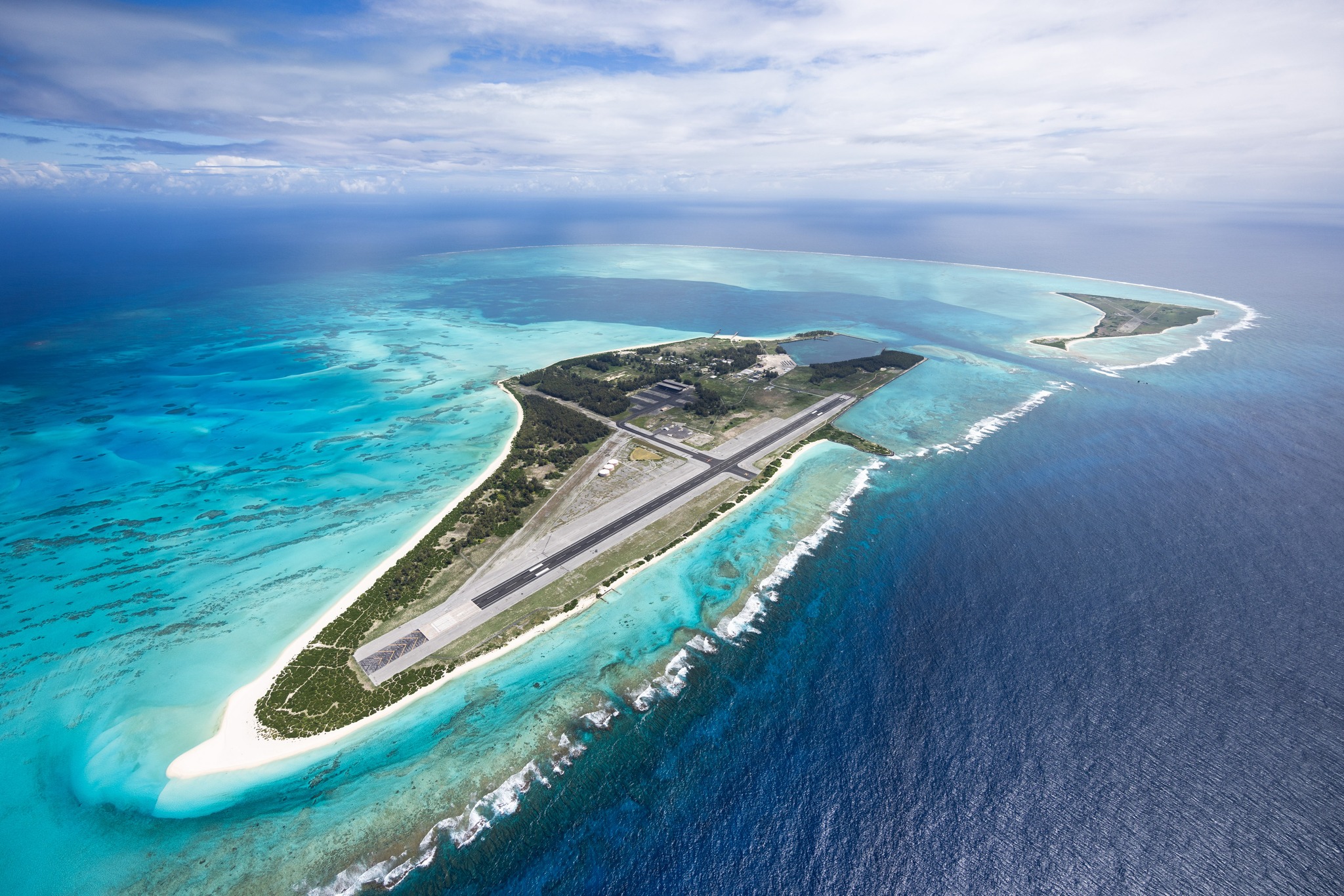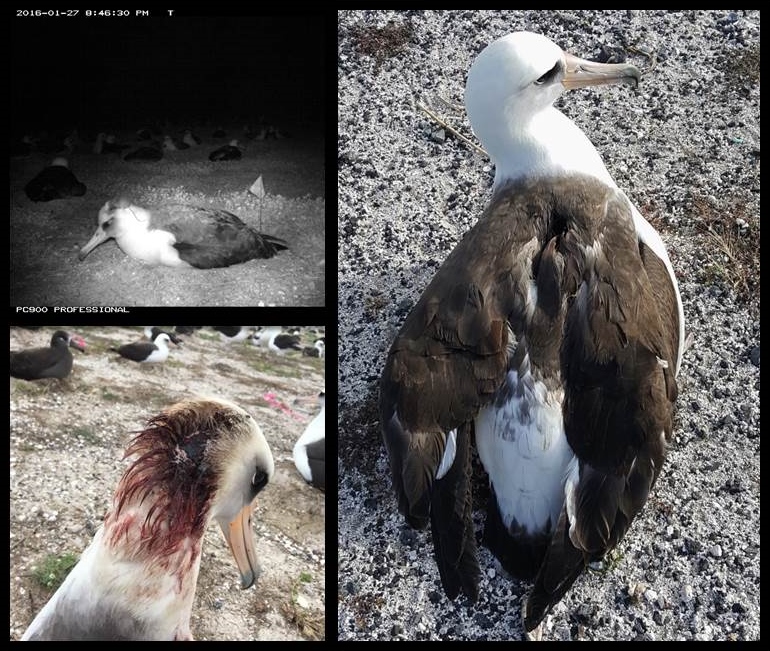
Mouse-infested Sand Island, with smaller mouse-free Eastern Island upper right, photograph by Jon Brack, USFWS
The Midway Seabird Protection Project aimed to eradicate House Mice Mus musculus that have taken to attacking albatrosses on Sand Island, the larger of the two islands that make up USA’s Midway Atoll in the North Pacific.

“Using a new hopper [filled via an excavator] specially constructed for this project, we safely and efficiently filled the bucket while reducing risk to crew and equipment. Affectionately called Dennis and standing roughly 10-feet [three-metres] tall, the hopper is made of heavy steel and able to stand securely despite the helicopter’s strong downwash”, photograph by Jon Brack, USFWS
Aerial bait applications were completed in July, but subsequently mice have been found to be still present, as recently reported on the Facebook page of the Pacific Islands: U.S. Fish and Wildlife Service.
“In 2015 attacks by invasive mice on albatross at Midway Atoll spurred the U.S. Fish and Wildlife Service and our partners working in Papahānaumokuākea Marine National Monument to initiate the Midway Seabird Protection Project, with a goal to eradicate non-native mice from Sand Island. After years of planning and preparation with top rodent control experts from the U.S. and internationally, the project was implemented this year.
However, after safely and effectively completing bait applications across Sand Island this summer, mice are still present in many areas of the island, and a root cause is not immediately evident.
We are ceasing current eradication efforts and transitioning to continue to care for native species and gathering data to help inform this project and similar projects around the world. Learn more about the project implementation, where we are now with the project, and [find] upcoming updates here.”
Evidence of mouse attacks on Midway’s Laysan Albatrosses, from USFWS
The project reports in its latest update, dated 15 August:
“There are theories, and questions, as to why mice persist on Sand Island. As the team transitions to a Mitigation and Learning Phase, we will continue to gather data to try to find answers. Environmental Monitoring, begun before the application of any bait and continuing throughout the project, can help us understand conditions on the ground. Additional studies can provide knowledge of Sand Island mouse foraging behaviors and food preferences, habitat anomalies, factors of weather and bait, and more. We will also continue to monitor the native wildlife for impacts from mice and take efforts to minimize predation on seabirds when we find it is occurring. The outcome of every rodent eradication effort is uncertain, and every project is an opportunity to learn more about rodents, rodent behavior, toxicants, mitigation of risk to non-target species, and other factors that can influence future restoration projects. Lessons learned on Midway will help inform this project and similar projects around the world”.
The Midway Atoll failure follows that of the Gough Island Restoration Project that failed to eradicate House Mice that also attack that island’s albatrosses (and other seabirds) in 2021.
John Cooper, Emeritus Information Officer, Agreement on the Conservation of Albatrosses and Petrels, 24 August 2023

 Français
Français  English
English  Español
Español 